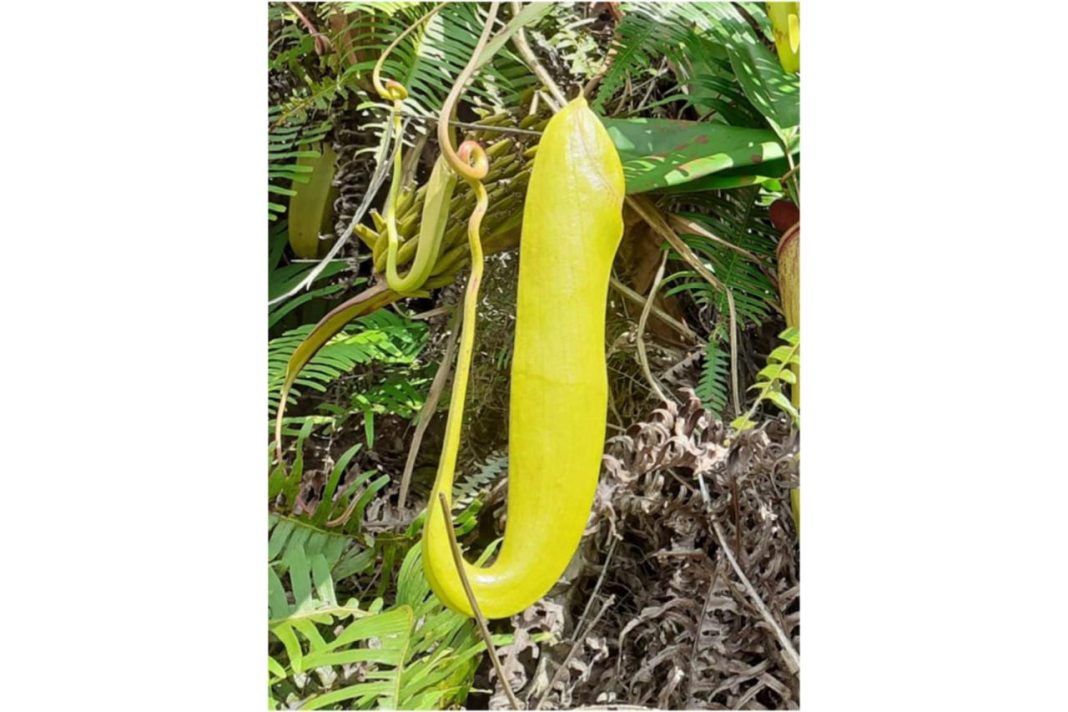By Roopak Goswami
Shillong, Nov 24: Nestled in the misty hills of Meghalaya, the endangered pitcher plant Nepenthes khasiana has fascinated scientists for decades. Known for its carnivorous nature, the plant has now proven to be a reservoir of potent medicinal compounds, particularly in its unopened pitcher fluids.
A new study, published in Intelligent Pharmacy (2024), reveals the plant’s potential in developing novel drugs to combat major health challenges, including cancer, coronavirus, and microbial infections. The study was done by Anindita Bhattacharya, Akalesh Kumar Verma, Srinivas Rao, Sarah G. Momin, P. Radhakrishnan and Prabal Sarkar. The researchers are from Department of Earth Science, University of Science & Technology Meghalaya, Department of Zoology, Cotton University, Guwahati, and Department of Pharmaceutical Analysis, NIPER, Guwahati.
Nepenthes khasiana is a pitcher plant endangered and endemic to northeast India. This plant is particularly common in the Garo, Khasi, and Jaintia Hills of Meghalaya. Due to its therapeutic qualities the pitcher plant is utilized by several indigenous groups in Meghalaya. Indigenous communities of Meghalaya have long relied on Nepenthes khasiana for its therapeutic properties. It has been used to treat ailments such as eye infections, stomach disorders, and diabetes. While these traditional practices hinted at the plant’s medicinal value, this study scientifically validates its potential.
Pitcher plant fluids were randomly gathered from unopened pitchers flourishing in natural habitats from three sites outside the protected area in Jaintia Hills of Meghalaya.
“Owing to the medicinal properties, in the current investigation, the Gas Chromatography-Mass Spectrometry (GC–MS) technique was used to detect and identify the phytochemical substances present in the pitcher fluids of N. khasiana, as our previous study revealed that the communities of Meghalaya used pitcher fluids more than the remaining parts of N. khasiana for treating various ailments” the authors said.
Using advanced Gas Chromatography-Mass Spectrometry (GC-MS) techniques, the study identified 22 bioactive compounds in the plant’s fluids. These compounds include antioxidants, antimicrobials, and fatty acids, many of which show promise for treating various diseases. Among these, 19 compounds adhered to Lipinski’s Rule of Five, suggesting their potential as orally active drugs.
The research team collected fluid samples from unopened pitchers in Meghalaya’s Jaintia Hills and subjected them to a meticulous extraction and profiling process. Using a blend of methanol, chloroform, and water, the compounds were isolated and analyzed. This method ensured the preservation of volatile bioactives and enabled precise identification.
Medicinal Promise in a Fluid
The study highlights 22 bioactive compounds, including:
Palmitic Acid (37.03%) and Stearic Acid (28.26%): Fatty acids that act as urinary acidulants and have antimicrobial and anti-inflammatory properties.
2,4-Di-tert-butylphenol: A compound with coronavirus-inhibiting potential, as well as antioxidant and coronary dilator properties.
β-D-Galactofuranose: Known for its anticancer, antioxidant, and urolithiasis-preventing capabilities.
Hexadecanoic Acid: A multitasking molecule effective against respiratory issues, muscle weakness, and infections.
“These compounds showcase the wide-ranging pharmacological potential of Nepenthes khasiana, positioning it as a valuable resource in the fight against modern diseases” the study says.
While the findings are promising, the researchers emphasize the need for further studies. Clinical trials, cytotoxic studies, and deeper exploration of the plant’s bioactive pathways are essential to determine its safety and efficacy for human use. Additionally, research on its cultivation outside natural habitats could alleviate the pressure on wild populations.




